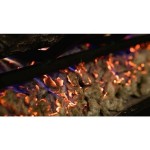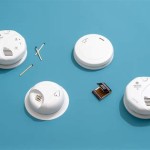How to Redo a Tile Fireplace: A Comprehensive Guide
Redoing a tile fireplace can dramatically transform the look and feel of a living space, updating its aesthetics while potentially increasing its value. This process involves careful planning, preparation, and execution to ensure a safe, functional, and visually appealing result. The project necessitates a thorough understanding of materials, tools, and techniques. This guide outlines the essential steps to successfully redo a tile fireplace, covering everything from initial assessment to final finishing.
Key Point 1: Preparation and Planning
Before embarking on any renovation project, particularly one involving a fireplace, meticulous preparation and planning are paramount. This stage dictates the overall success and efficiency of the entire process. It encompasses assessing the existing fireplace condition, selecting appropriate materials, and ensuring safety precautions are in place.
Assessment of Existing Fireplace: A comprehensive evaluation of the existing fireplace is the critical first step. This includes identifying any structural damage, such as cracks in the firebox, crumbling mortar joints, or loose tiles. Attention should be placed on the condition of the firebox itself, as any compromised integrity might necessitate professional repair before any aesthetic improvements are undertaken. The flue should be inspected for blockages or damage, as a properly functioning flue is essential for safe fireplace operation. Furthermore, assess the existing tile. Is it securely adhered to the surface? What is the condition of the grout? Are there any underlying moisture issues?
Material Selection: Choosing the right tile is a crucial decision, influenced by both aesthetic preferences and functional considerations. Factors to consider include:
- Tile Material: Options range from ceramic and porcelain to natural stone such as granite, marble, and slate. Ceramic and porcelain are generally more affordable and easier to maintain, while natural stone offers a more luxurious and unique appearance. Ensure the chosen tile is rated for fireplace use, meaning it can withstand high temperatures.
- Tile Size and Shape: The size and shape of the tile can significantly impact the overall look. Larger tiles create a more modern and seamless appearance, while smaller tiles allow for intricate patterns.
- Grout Selection: The grout color and type are essential. Epoxy grout is more resistant to stains and moisture than cement-based grout, making it a good choice for high-use areas. Choose a grout color that complements the tile and enhances the overall design.
- Mortar Selection: Choose a high-temperature mortar specifically designed for fireplace applications. This type of mortar is formulated to withstand the extreme heat generated by the fire, preventing cracking and degradation.
Safety Precautions: Fireplace renovations can be messy and potentially hazardous. Prioritizing safety is crucial. This includes:
- Eye Protection: Wear safety glasses or goggles to protect your eyes from dust and debris.
- Hand Protection: Use work gloves to protect your hands from sharp edges and rough materials.
- Respiratory Protection: Wear a dust mask or respirator to avoid inhaling dust particles, especially when removing old tile or mortar.
- Ventilation: Ensure adequate ventilation in the work area to minimize dust and fumes. Open windows or use a fan to circulate air.
- Fire Safety: Keep a fire extinguisher readily available in case of emergencies.
Tool Acquisition: Acquiring the necessary tools before beginning the project streamlines the process and prevents unnecessary delays. Essential tools include:
- Chisel and Hammer: For removing old tile and mortar.
- Scraper: For cleaning the surface and removing adhesive residue.
- Trowel: For applying mortar and grout.
- Tile Saw: For cutting tiles to the desired size and shape. A wet saw is recommended for clean and accurate cuts.
- Grout Float: For applying grout evenly.
- Sponges: For cleaning excess grout.
- Level: For ensuring tiles are installed straight and level.
- Measuring Tape: For accurate measurements.
Key Point 2: Removing the Existing Tile and Preparing the Surface
The process of removing the old tile and preparing the underlying surface is critical for ensuring a strong and lasting bond with the new tile. This step requires patience and attention to detail to avoid damaging the surrounding area.
Tile Removal: Removing the existing tile can be a challenging task, particularly if the tile is securely adhered. Employ the following techniques for effective removal:
- Chisel and Hammer Technique: Position the chisel at a slight angle against the edge of the tile and strike it firmly with the hammer. Work your way around the tile, gradually loosening it from the surface.
- Heat Gun Application: Applying heat with a heat gun can soften the adhesive, making the tile easier to remove. Exercise caution when using a heat gun to avoid burns.
- Patience and Persistence: Some tiles may be more difficult to remove than others. Be patient and persistent, and avoid using excessive force, which could damage the substrate.
Mortar Removal: After removing the tile, the next step is to remove any remaining mortar. This can be accomplished using a chisel and hammer, a power scraper, or a wire brush. Ensure the surface is as clean and smooth as possible to provide a good bonding surface for the new mortar.
Surface Preparation: The substrate must be clean, dry, and structurally sound to ensure proper adhesion of the new tile.
- Cleaning: Thoroughly clean the surface to remove any dust, debris, or adhesive residue. A scraper, wire brush, and degreasing cleaner can be used.
- Repairing: Repair any cracks or damage to the substrate with patching compound. Allow the patching compound to dry completely before proceeding.
- Priming: Apply a primer specifically designed for tile installation. The primer will improve adhesion and prevent moisture penetration.
Key Point 3: Installing the New Tile
The installation of new tile is the final and most visible step in the fireplace renovation process. Accuracy, precision, and attention to detail are crucial for achieving a professional-looking result.
Mortar Application: Apply a thin, even layer of mortar to the back of each tile using a notched trowel. The size of the notches on the trowel will depend on the size and type of tile being used. Ensure the mortar is evenly distributed across the entire back of the tile.
Tile Placement: Carefully position each tile on the prepared surface, pressing it firmly into the mortar. Use tile spacers to maintain consistent grout lines between the tiles. A level should be used frequently to ensure the tiles are installed straight and level.
Cutting Tiles: A tile saw is essential for cutting tiles to fit around the firebox opening and other obstacles. Measure accurately and cut carefully to avoid wasting tile. A wet saw is recommended for clean and accurate cuts.
Grouting: After the mortar has cured for the recommended time, remove the tile spacers and apply grout to fill the gaps between the tiles. Use a grout float to spread the grout evenly and force it into the joints. Remove excess grout with a damp sponge.
Cleaning and Sealing: After the grout has cured, clean the tiles thoroughly to remove any remaining grout haze. Apply a grout sealer to protect the grout from stains and moisture penetration. Follow the manufacturer's instructions for application and drying time.
Final Inspection: Conduct a final inspection to ensure all tiles are securely adhered and properly grouted. Address any imperfections or areas that require touch-up. Allow the grout sealer to cure completely before using the fireplace.
By following these steps carefully, a homeowner can successfully transform their tile fireplace into a beautiful and functional focal point of their living space. Remember to prioritize safety, take your time, and pay attention to detail for the best possible results. Seek professional assistance if you are unsure about any aspect of the process.

Diy Fireplace Makeover At Home With The Barkers

110 Diy Fireplace Makeover How To Paint Tile Jessica Welling Interiors

How To Paint Tile Easy Fireplace Makeover Setting For Four Interiors

Our 200 Marble Fireplace Makeover Young House Love

Er Friendly Fireplace Makeover With L Stick Tiles The Homes I Have Made

Remodeling A Fireplace With Tile

How To Tile A Fireplace Surround Thrifty Decor Diy And Organizing
5 Amazing Inexpensive Easy Fireplace Remodel Transformations Designed

Diy Tile Fireplace Makeover The Home Depot

Diy Tile Fireplace Makeover The Home Depot








